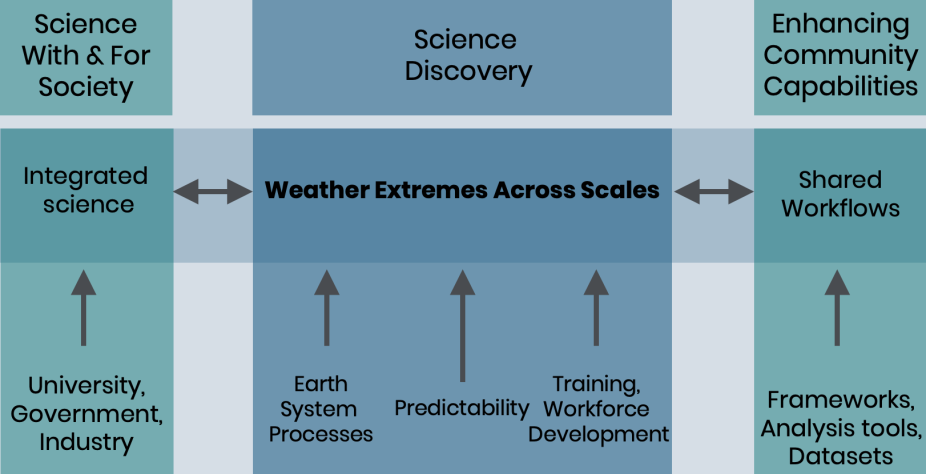Weather Extremes Across Scales
Overview
Weather EXtremes across Scales (WEXS) advances our understanding extreme weather across scales and the driving Earth system processes. WEXS advances and shares methods to create capacity for community investigations into extreme weather across scales. We work with stakeholders to pursue new fundamental science questions while at the same time create usable and useful research outcomes.

Research
Process-Based Understanding
We develop and implement research frameworks based on observations, theory, and numerical modeling to understand the local-to-global and coupled Earth system process interactions that drive extreme weather across scales. This includes analyzing process representation in a hierarchy of WRF and MPAS experiments from the tropics to the mid-latitudes and from large-eddy to global scales. We focus on processes that bring extreme rainfall, large hail, wind, coastal surge, and wildfire.
Predictability
Using operational and experimental sub-seasonal to seasonal (S2S) forecasting systems we quantify the S2S predictability of extreme weather. We focus on the sources and scales of predictability. Specific forecasting systems are the seasonal-to-multiyear large ensemble using CESM2, the ECMWF integrated forecasting system, and experimental systems using MPAS informed by outputs from the research frameworks above.
Useable Science
We partner with private industry and government entities to identify the fundamental science advances needed to support effective risk management. These partnerships allows us to understand how to design scientific workflows that produce new understanding that has broadly applicability across public and private risk management. Adopting a convergence science approach we engage with stakeholders broadly to expand the problem space and also the solution space. This creates new community research frameworks built around NSF NCAR’s community models, tools, and datasets.
Shareable Workflows
We develop and share workflows – including pre- and post-processing software for simulations and big data analysis tools – to create capacity for investigations into extreme weather across scales. We create and share Jupyter notebooks using python, xarray, and Dask to analyze NSF NCAR community model datasets efficiently.
People
See https://www.mmm.ucar.edu/about/people
If you are interested in learning more please contact James Done.